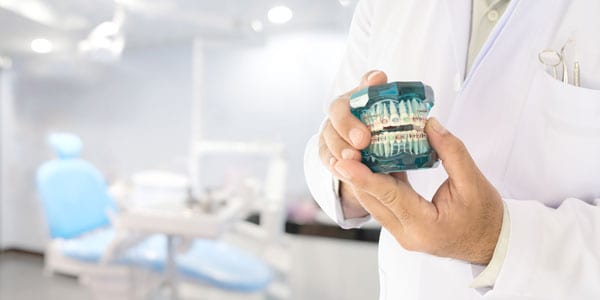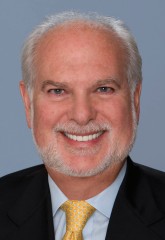Dr. Ronald Roncone offers strategies for changing office paradigms and “making orthodontics great again.”

Dr. Ronald Roncone discusses how to create a new paradigm for the orthodontic office
Many of us have heard about the “Golden Age of Orthodontics,” when orthodontists had all the patients they wanted and were able to see. In fact, those orthodontists actually sent potential new patients to clinicians just starting practice. When new patients arrived at your office, they always started after three more appointments. There were really no second opinions. That era (1950s and 1960s) is long gone in many ways.

In those days, there was no need for marketing, and in fact, advertising was illegal in most places. GPs and pediatric dentists did not do any orthodontics. There was no insurance. Orthodontic residency programs were very small. Group practices were virtually unknown. There were no MSOs or DSOs. There was no internet. The post-WWII economy was booming.
![Figure 2: Elastomeric Modules versus Self-Ligating Braces (SLBs) 4 sec/tooth to remove elastomeric module x 20 teeth = 80 sec 16 sec/arch = 32 sec for both arches to open SLB 80 sec – 32 sec = 48 sec per person/saved @ 50 pts/day a 50 x 48 sec = 2,400 sec 2,400 sec ÷ 60 (sec per min) = 40 min/day 40 min x 46 weeks worked = 1,840 min 1,840 ÷ 60 (1 hour) = 31 hours [1 week saved by using SLB] Closing SLB or tying-in with elastics = 1 more week Save 48 seconds opening and 48 seconds closing versus elastomerics. If 2 weeks/year just in an equal amount of ties or opening and closing of SLBs If using elastomeric module … Need to see patients at most every 6 weeks (4 would be better). With SLB much less: 8-10 weeks If treatment takes the same amount of time with both types … i.e.: 16 months = 64 weeks @ 6 weeks = 10.5 appointments @ 9 weeks = 7 appointments 3.5 fewer weeks of appointments (at a 4-day week) 5.5 fewer weeks of work Example: 3.5 appointments saved per patient x 200 starts = 700 fewer appointments 700 appointments ÷ 50 pt/day = 14 less days if SLB 2 fewer weeks of work due to opening and closing SLBs + 3.5 fewer weeks of work because of fewer appointments = 5.5 weeks less work](https://orthopracticeus.com/wp-content/uploads/2020/12/Figure-2-Elastomeric-Modules-versus.jpg)
Then came “Progress”! Slowly at first and then very rapidly. Nothing was automatic anymore. You had to start working to get new patients in the door — marketing. Internal first, then external; then blatant in-your-face advertising became necessary. The public was being “educated” and wanted multiple opinions. Gosh, they even had opinions; chairside assistants turned into mini-orthodontists; “Treatment Coordinators” became de rigueur.
Staff began to put the braces on (orthodontists no longer made and placed bands); staff members took diagnostic records and explained what they meant and how to pay for services; orthodontic supply companies made brackets that required no wire bending. This all became fashionable — how many colors are there in the rainbow? Colleagues became competitors. On what Google page do we post our information? Some of us wondered, “What the heck is Google?” Simple and nice offices where we had only to think of what color chairs to buy (banana yellow was my favorite) and how white should the walls be, turned into multimillion-dollar temples of 3,000 to 10,000 square feet and more. Management companies and consultants were now a necessity in order to survive. Overhead changed from 25% to 60%, 70%, 80%, and more. The workday, which was a 9 a.m. to 5 p.m. tradition, became a 7 a.m. to 8 p.m. multiple shift at the other extreme. A one-office location became 2, 5, 15, 30 locations in multiple cities, states and countries — many with the intention of selling them to a DSO for some multiple of gross, net, or other accounting word.
What once was a very nice, low-stress profession has become something very different. Admittedly, some orthodontists love where the profession is, but in talks with orthodontists who attend our courses and for those whom we consult, there is a desire for something different.
Can we please … MAKE ORTHODONTICS GREAT AGAIN — MOGA®?
The answer of course is “yes” for those who aspire for something different. This difference does not necessarily mean turning your practice into a mom-and-pop type arrangement. What is required? We must “simplify the complex”:
- Use “strategic intent” and plan for absolutely outrageous outcomes.
- Create meaningful systems (10 of them in an orthodontic practice).
- Perfect those systems.
- Do not allow anyone to limit you or tell you what is possible.
- Develop flowcharts of possibilities (Figure 1).
- Climb the inevitable learning curves all the way to the top. Do not stop in the middle.
- Develop metrics for the most important systems (Not what you think for outrageous outcomes).
- Change the word prefer to should:
It is not what you prefer; it is about what you should do to achieve outrageous outcomes.
Part of outrageous outcomes can be, What do I need to do to change my 4-day a week practice into 2 days without losing income? What is necessary to reduce emergencies to one per month? The goal is always zero. How do I reduce staff from 17 to 7 or 5 and be more profitable?
30% to 40% of what the average orthodontic practice does on a daily basis is:
- an emergency
- unnecessary
- a redo
Go counterculture! Change paradigms in the middle of a paradigm shift! Become a major disruptive force! MOGA!
One way orthodontists can add a new paradigm and make orthodontics great again is by offering airway orthodontics. Read Dr. Barry D. Raphael’s article “Airway orthodontics the new paradigm: part 1, addressing the airway” here:
https://orthopracticeus.com/ce-articles/airway-orthodontics-new-paradigm-part-1-addressing-airway/.
Stay Relevant With Orthodontic Practice US
Join our email list for CE courses and webinars, articles and mores

 Ronald Roncone, BA, DDS, MS, received his degrees in physiology from Marquette University and his postdoctoral Certificate in Orthodontics from Forsythe Dental Center and Harvard School of Dental Medicine. Dr. Roncone maintains a large practice in Vista, California, with 55% adult patients. Dr. Roncone has lectured extensively, presenting more than 1,000 seminars around the world, and is President and CEO of Roncone Orthodontics International®, which offers practice management courses as well as in-office consulting and marketing services.
Ronald Roncone, BA, DDS, MS, received his degrees in physiology from Marquette University and his postdoctoral Certificate in Orthodontics from Forsythe Dental Center and Harvard School of Dental Medicine. Dr. Roncone maintains a large practice in Vista, California, with 55% adult patients. Dr. Roncone has lectured extensively, presenting more than 1,000 seminars around the world, and is President and CEO of Roncone Orthodontics International®, which offers practice management courses as well as in-office consulting and marketing services.
